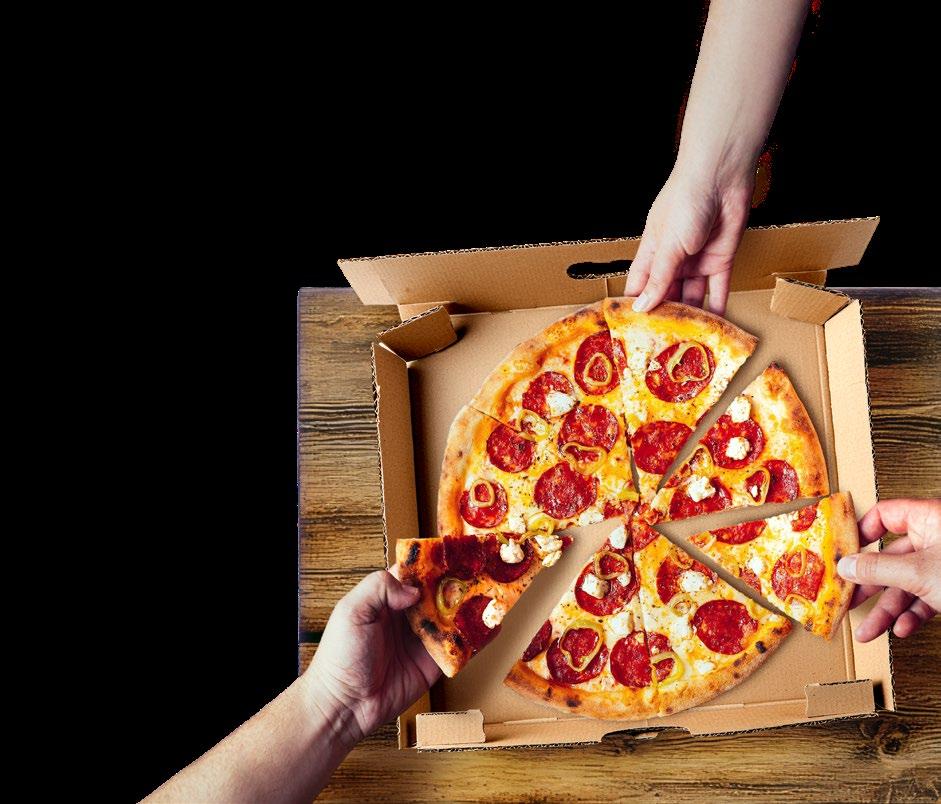




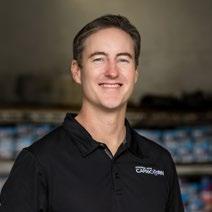







It’s an exciting time to be a part of Capricorn’s Community as we look to the next 50 years of working together to benefit each other.
Last month I had the opportunity to launch our new Capricorn 2030 strategy to our people, bringing them together to celebrate One Capricorn, and One Community. Our Powering Forward strategy is all about empowering our Community through connection, collaboration and a shared vision for the future.
We will continue our focus on connecting our Members with Preferred Suppliers who support all your business needs. We’ve had a fantastic response to our new Ecommerce Partners with Members now able to purchase online from JB Hi-Fi Business in Australia and Partmaster in New Zealand. These partnerships make it simple and easy to purchase items, while still getting the Capricorn benefits you know and love. If there’s a product or service you think could be another Ecommerce Partner, please let us know by speaking with your Capricorn Area Manager.
Capricorn remains committed to ensuring your business data is safe and secure. Last month we launched Capricorn ID and multifactor authentication (MFA) for our new Members. This additional layer of protection provides Members with greater peace of mind for the security of their Capricorn account. We will begin to role this out to existing Members shortly, so watch this space.
Finally, it’s nearly time for the Capricorn Gala Dinners & Trade Shows. Running in six locations, these events are more than just a celebration, they provide opportunities for Members, Preferred Suppliers and our people to deepen their connections within the Capricorn Community. At Trade Shows, you can explore products, build relationships and exchange ideas that drive growth and success. Gala Dinners, on the other hand, offer a chance to celebrate achievements and have fun as a group. I always look forward to these events and I hope to see many of you there. You can purchase tickets via myCAP, your online platform.

Brad Gannon Group CEO
4 HUGO’S AUTO PARTS RECYCLING VISION
How Paradise Auto Parts helped to transform the sector.
8 THE SUPERTRUCKS ARE COMING!
The groundbreaking initiative revolutionising the freight industry.
12 TAKING THE WHEEL
What Bryce and Bianca learned taking over the family business.
16 AI AND YOUR WORKSHOP
Are you making the most of this emerging technology?
How Paradise Auto Parts helped to raise the bar for auto parts recycling.

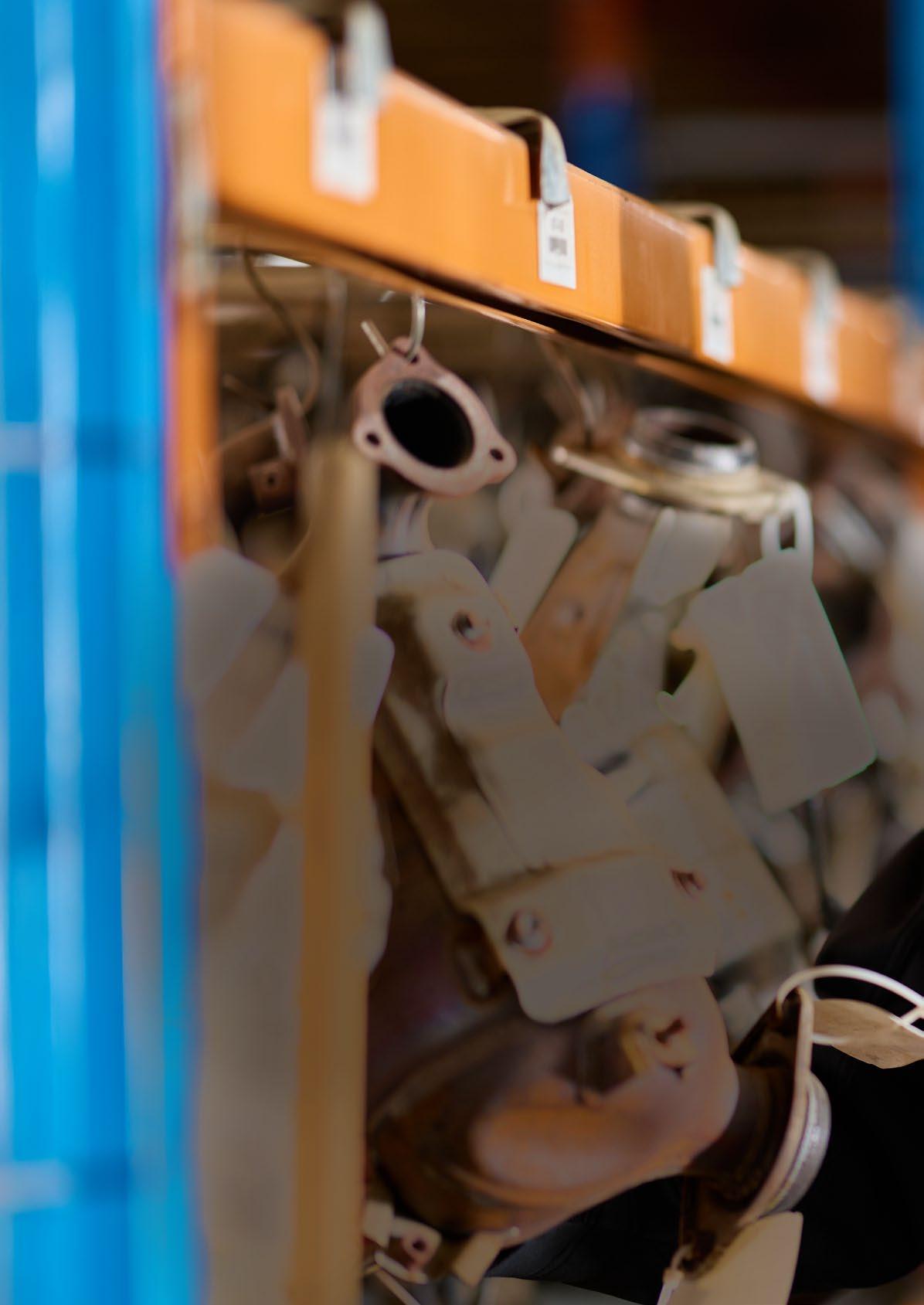
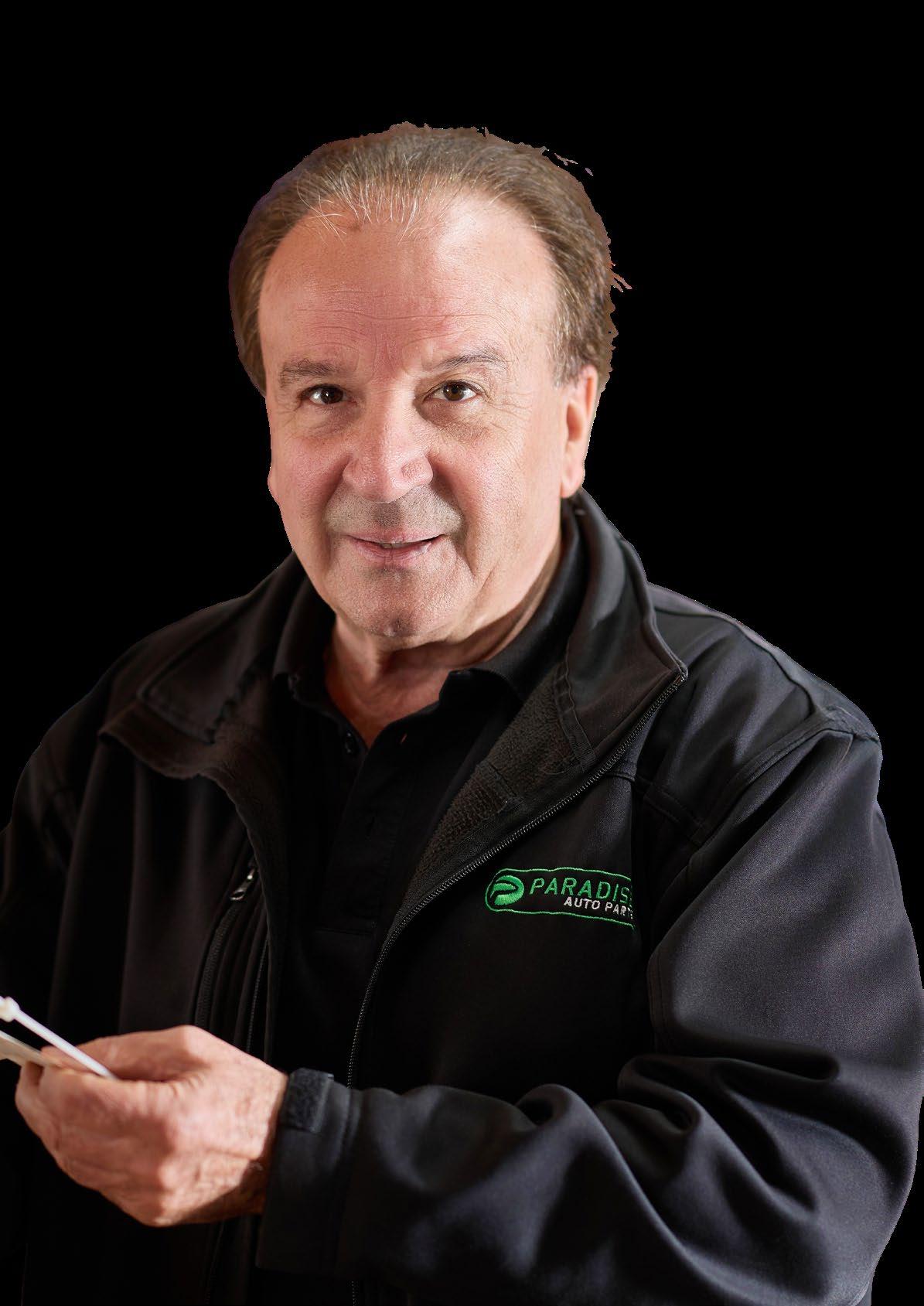
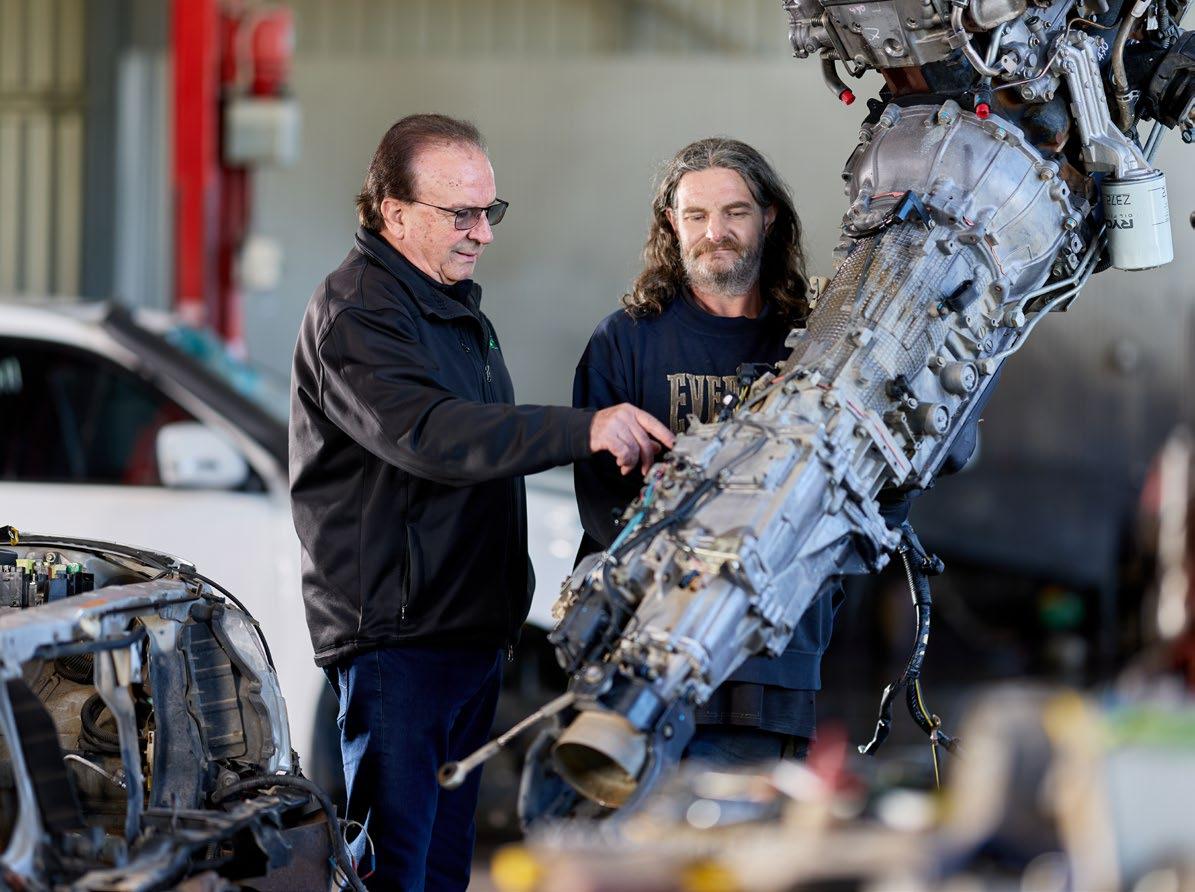
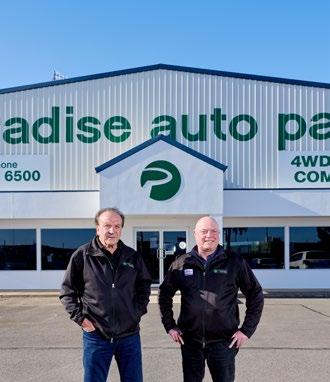
In the old days, a trip to the wrecker’s yard in search of a cheap part could be a particular kind of cultural experience.
For anyone over a certain age, the idea conjures pictures of a bloke in shorts, probably with a stubby or a cigarette in hand, pointing vaguely across several acres of tangled metal towards a car that might have the part you wanted — a part that may or may not work.
Hugo Pellegrini remembers those days all too well. In the late 1980s, he used to work at a yard just like it.
“I worked for someone who had a mechanical workshop and spare parts recycling business,” Hugo said. “I was a mechanic but after about a year and a half I got involved in the spare parts business. I took a liking to it. I thought recycling was great. What intrigued me was that you could buy vehicles, pull them apart and sell the parts out of them. I just saw so much potential in reusing second-hand parts. It was profitable, and people could get their cars fixed without paying exorbitant money.”
Hugo only worked at the yard for a couple of years.
“I’d learned so much working for this particular person that I thought, ‘you know what? I can do this on my own’,” he said. “I saw a future in it; I had a vision that I could be doing it a lot better than he was doing it.”
Hugo bought a small, rundown wrecker’s yard in Adelaide.
“I can’t even remember the name of it,” he said. “It was a very basic walkin place. Nothing special. It was very primitive. No inventory, just parts everywhere. But (owning) it meant I could make my own decisions and mistakes.”
Hugo might not have realised it at the time, but he was embarking on what has become a 35-year journey to radically professionalise not just his own yard — which has grown exponentially over the years — but the industry itself.
Under Hugo’s leadership, that “small, rundown” yard would become Paradise Auto Parts — a warehouse of more than 4,500 square metres of storage space with an inventory of more than 50,000 spare parts from all makes and models of cars, commercial vehicles, 4WDs and light trucks. The parts are cleaned and catalogued, meticulous provenance records are kept, and every step of the recycling process is guided by strict quality control processes.
If you walk into the warehouse today, you’re greeted by one of Hugo’s four sales professionals, who will help you find the exact part you need on the digital inventory, and show you hundreds of photos, before collecting it for you.
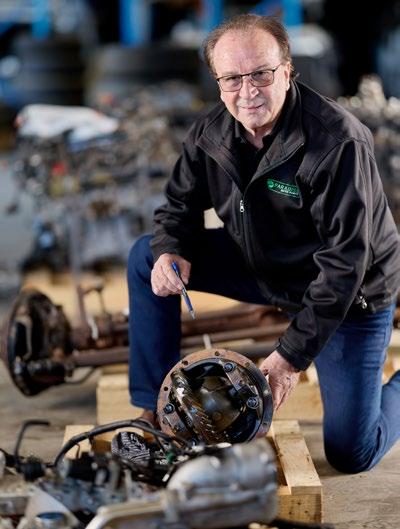
“My drive has been to supply the correct product at the right price,” he said. “If you’re buying the right stock and the parts are good, you can offer people different types of product. This part could be $200 and that one’s $500, but you can explain the difference. Parts may look the same but they’re not the same, because one’s done a lot more work than the other.”

“No one used to distinguish that. In the old days you used to get away with it; the law would never penalise a wrecker because the customer had decided to buy a second-hand part, and that was it. I want the customer to know what they’re buying, so all the information is clear.”
“Our parts are guaranteed and we offer a warranty. If we sell a secondhand part and there’s a problem, it’s simple. It’s either a fit issue or it’s a faulty product. We know we can diagnose that. If it’s a faulty part, we’ll send another one to you, no questions asked, no barriers.”
“I just wanted to change the way we do things. I wanted to work more in the professional world.”
Hugo has walked the talk on professionalising his trade. He’s a member, and former officer holder, of the Auto Parts Recyclers Association of Australia — the national peak body for the sector. (He deliberately uses the term “recycler”, rather than “wrecker”, to refer to the modern industry.) He coordinates a group
of recyclers across Australia that adhere to his principles of quality and professionalism, creating an informal network that can supply parts ondemand across the country. And, in 1996, Paradise Auto Parts became a Capricorn Preferred Supplier. It radically expanded Hugo’s potential customer base from his local area to all South Australia and the Northern Territory. Hugo says these days, around 45 per cent of his customers buy parts from him using their Capricorn Trade Account — and he and his team try to get out and physically meet those customers as often as possible.
“My success with Capricorn has been about building relationships,” he said. “Once we started doing that, it got better and better. I’ve never looked back.”
Recycling parts has come a long way since the days of the old wrecker’s yards — and Hugo and Paradise Auto Parts have been at the forefront of that change.


IT STARTED AS AN AMBITIOUS IDEA. IN 2009, THE US DEPARTMENT OF ENERGY (DOE) CHALLENGED THE FINEST ENGINEERS IN THE HEAVY-DUTY TRUCKING INDUSTRY TO BUILD A MORE EFFICIENT TRUCK.
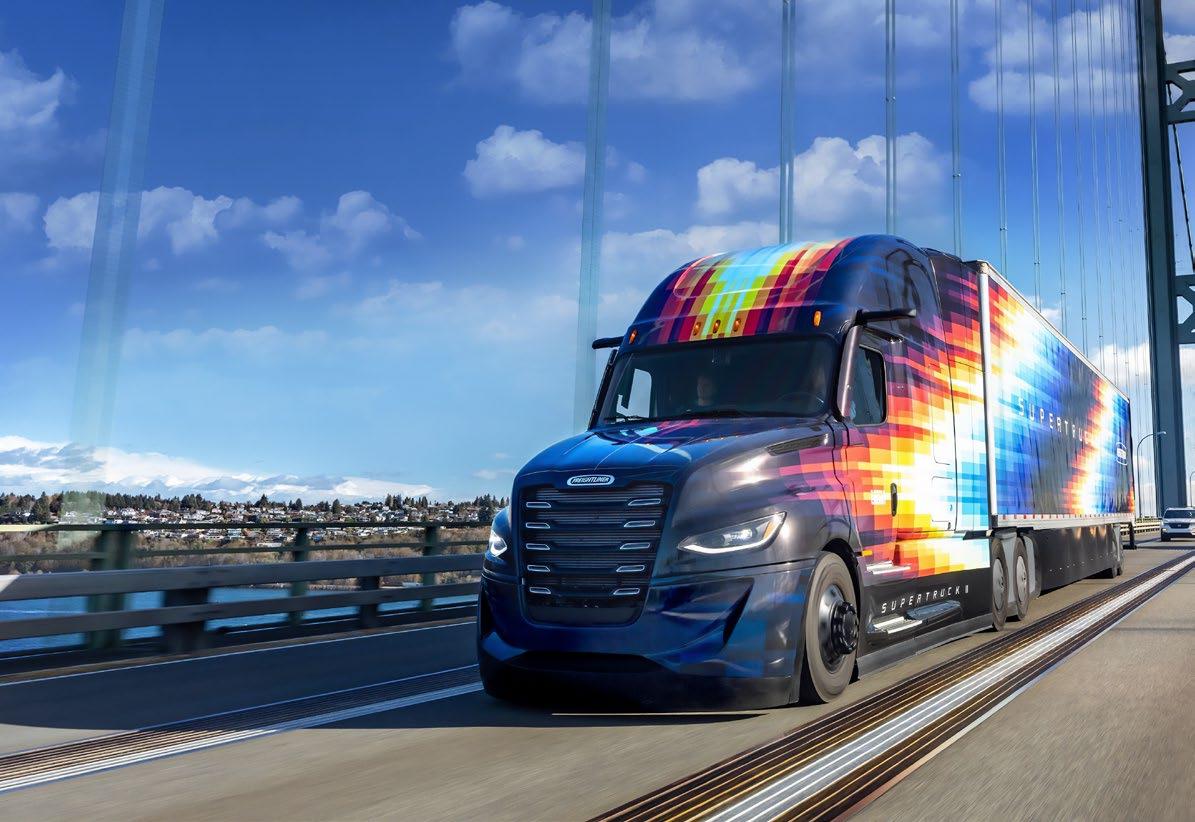









he goal was to revolutionise the American freight industry reducing fuel consumption, lowering costs for operators hit by soaring diesel prices, and dealing with growing concerns about greenhouse gas emissions.
With heavy-duty trucks responsible for 20 per cent of the US transportation fuel consumption, the DOE’s SuperTruck program was a critical opportunity for improvement. The US government stumped up serious cash to get the industry’s top players involved. Sixteen years later, the program is in its third iteration, and the results have been nothing short of astounding.
The $284 million original SuperTruck program launched in 2009 with three huge goals: to develop and demonstrate a 50 per cent freight efficiency improvement from a 2010 baseline (which translates to achieving almost 10 miles to the gallon, or 0.235 litres to the kilometre); improve engine efficiency by eight per cent (to achieve 50 per cent brake thermal efficiency, and thereby boost fuel efficiency by 16 per cent); and to show a further five per cent improvement in overall engine efficiency.
Fifteen industry partners, including six major truck manufacturers — Cummins and Peterbilt (in joint venture), Daimler, Navistar, Volvo and PACCAR — each received a share of federal funding to pursue their own approaches to the challenge. Every team met or exceeded the objectives set.
By the time SuperTruck I had finished in 2015, the Department of Energy had identified 26 different technologies with the potential to succeed in the market within four years, and a dozen more that would be viable within the decade. Many have since found their way into production vehicles. Downspeeding, intelligent torque management, predictive gear shifting, tyre compounds that reduce rolling resistance, predictive GPS cruise control and lighter lubricants that were developed for SuperTruck I are now commonplace across the industry.
The program was such a success that the US government launched the $80 million SuperTruck II in 2016, with the even more ambitious target of improving vehicle freight efficiency by more than 100 per cent and increasing brake thermal efficiency by 55 per cent.
Once again, the results were impressive, with each team exceeding the project goals thanks to innovations in aerodynamics, rolling resistance, weight reduction and minimising wasted energy.
The $162 million third iteration of the SuperTruck program, announced in 2021 and still underway, represents a fundamental shift in focus. It’s looking at electrification and seeks to reduce medium and heavy truck greenhouse gas emissions by 75 per cent (on a life cycle basis), while also reducing the total cost of truck ownership.
The shift toward electrification brings huge challenges for the transportation industry, and to the SuperTruck innovators.
While diesel efficiency improvements could be measured relatively straightforwardly, electric truckdevelopment involves a massive technological shift that includes complex questions about charging infrastructure, battery technology and cost.
The participating teams are working on everything from electric powertrains to fuel cell systems, and the infrastructure needed to support them. The results of these labours are expected to be known by the end of this year.
Anyone familiar with US politics and culture closely will know there can sometimes be an anti-government thread to the way many Americans think. We often hear that our cousins in the U.S.A don’t like “big government”, or want the government to butt out of their lives. There is a widely held view that government regulation stymies innovation and clogs up the wheels of capitalism and free enterprise.
Whether or not this is true, what we have in the SuperTruck program is the US government (of all political stripes) leading to actively encourage innovation — and it has worked spectacularly. What sets the SuperTruck program apart from other government research initiatives (which might invite cynicism) is how successfully the innovations have transitioned to commercial applications. The aerodynamic improvements, engine technologies, and efficiency strategies developed under SuperTruck aren’t gathering dust in research labs — they’re rolling down highways not just across America but around the world, including in Australia and New Zealand.
The program’s success lies in its collaborative approach: in government incentivising and working with industry, partnering with actual truck manufacturers who have both the expertise to develop practical solutions and the commercial incentive to bring them to market.
As governments around the world move to “net zero”, the global trucking industry faces increasing pressure to reduce its emissions (while still maintaining the efficiency and reliability that keeps freight moving). The SuperTruck program serves as a crucial bridge between cutting-edge research and practical industry improvements. The innovations discovered in the US today will be standard technology and design features in the trucks we see on our roads and in our workshops in Australia and New Zealand in the near future.
With so much change ahead of us, it’s likely there are many more iterations of the SuperTruck program to come.

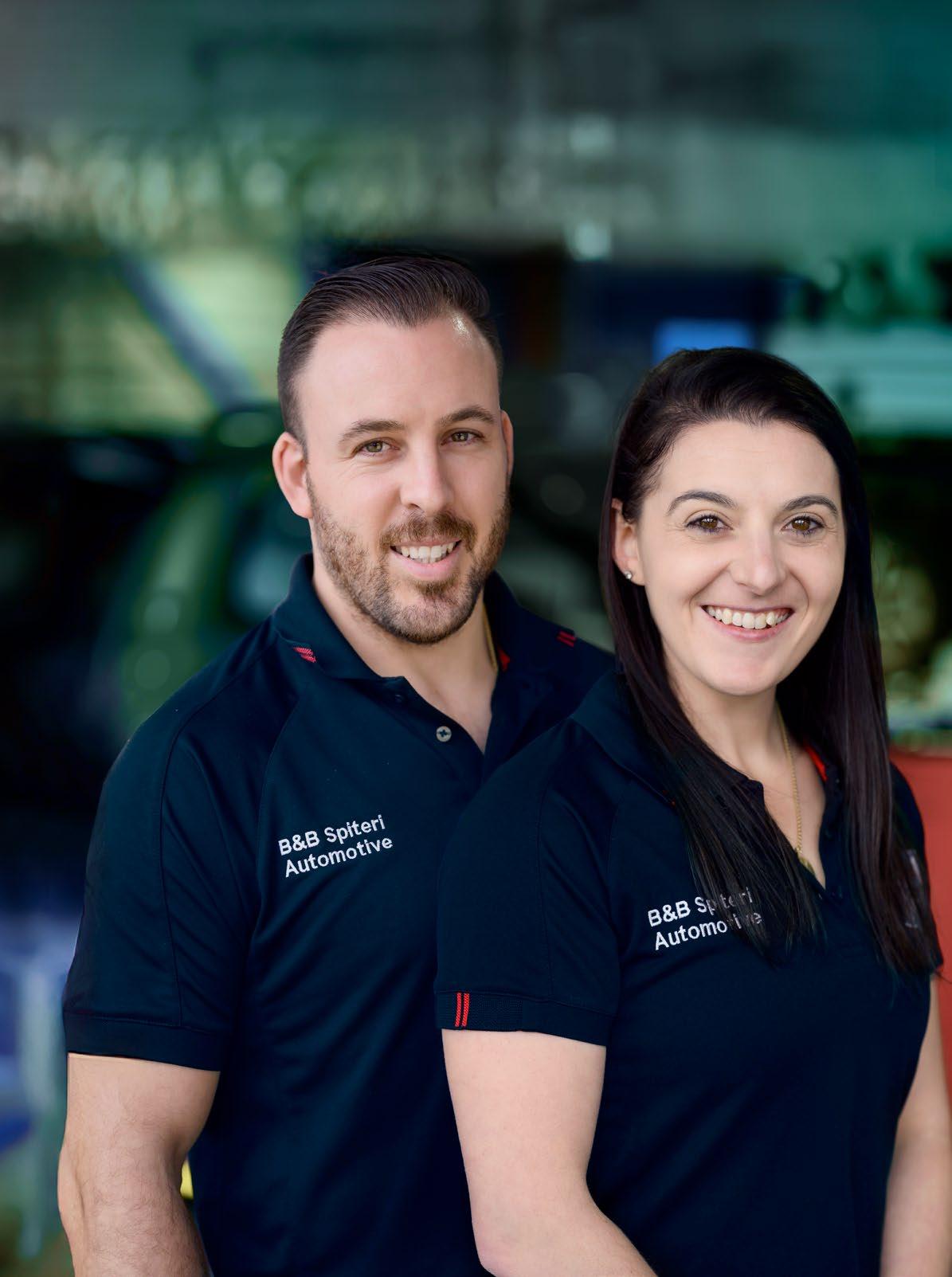
What Bryce and Bianca Spiteri learned from taking over the family business .
In July 2024, Bryce and Bianca Spiteri took over Rincap Automotive from Bryce’s father, Frank. Like many second-generation workshop owners, Bryce had spent his whole career in the family business. In 2009, he left high school early to start his apprenticeship at the workshop in Milperra, in south-western Sydney, NSW.
Also, in common with many mechanics who take over a family workshop, Bryce knew everything there was to know about fixing cars, but he didn’t know much about running a business.
“We winged it. We didn’t really have a succession plan other than the fact there was going to come a time when I took over,” Bryce said. “In the last three years, while still operating as lead technician, I’d taken on more of a managerial role, being more involved with dealing with the clients and coordinating staff. But my Dad never went to a business school. He left school and started a trade, straight up. Same as me. We’d never been told how to put a succession plan in place, or how to run and operate a business. Everything I knew about running a business came from what I’d seen my Dad do.”

It was a steep learning curve, but the potential chaos of the handover was eased by Frank continuing to work in the business three days a week after stepping down. Also, Bianca left her corporate career to join the newly renamed B&B Spiteri Automotive in November last year, bringing her considerable experience in digital operations and systems for companies like Lendlease and Allianz to the business.
“When Bryce took over I started attending events with him and we were talking about the business almost every day,” Bianca said.
“I just saw a huge opportunity to operationally improve the business and help run and manage it alongside him.”
Her experience translated into systematic changes, both culturally and operationally, including individual training plans for employees, regular “airtime sessions” for one-on-one feedback, documented processes in a new operations manual, and the transition from paper to digital job cards.
The changes the couple made have increased productivity to about 80 per cent and net profit by 10 per cent.
A year on, Bryce and Bianca have gathered a lot of advice for anyone preparing to transition a workshop’s ownership to the next generation:
There may be a good reason things are done the way they are. Take the time to learn, observe and appreciate.
“It’s in this history you’ll find pockets of wisdom that you can maintain— which may even help sustain your business,” Bryce said.
The example he offers is the way his father got to know his customers “beyond their car”.
“People still ask for him because he became a part of their community. We intend to carry this on.”
“It’s important to remember that learning everything behind business management takes time,” Bryce said. “Take what you can from existing processes that work for you, then carve out planning time to ensure you’re working towards new goals.”
Bryce created routines, like checking his profit and loss statement every Monday, and has non-negotiable time carved out each week to ensure he is on top of everything.
Change can be challenging for everyone in a business, from staff to customers, but it’s a business owner’s job to lead.
“You are ultimately at the forefront of the business plan and the execution of it,” Bryce said. “Trust yourself to make mistakes, try new things and make changes that feel uncomfortable. If you’re not evolving, you’re not growing. Keep pushing forward.”
“Always know the financial state of your business to ensure you can make the necessary changes to improve it, and forecast for any unknowns,” Bryce said. “Review any data available to you through your workshop management system to help calculate the productivity of your team.”
Bryce recommends streamlining and decluttering your business processes so they’re easily repeatable.

A business owner can’t physically or mentally do everything themselves, so making a process simple means you can (delegate it),”

The key to a successful automotive business is the customers, and having as much data as possible about them will help you better serve them, Bryce said.
“Ask customers to provide you with feedback so you can work on their experience and make it better for new customers.”
But perhaps the overarching lesson is to give yourself the best possible chance of success by having a proper succession plan in place.
“Knowing what we know now of what’s involved, if we have to hand over the business to someone else in many years to come, I feel like we’d be able to make it a much smoother transition,” Bryce said. “We’ll have that succession plan in place.”
Despite the learning curve, the couple have no regrets about taking over the family workshop. They’re focused on the exciting times ahead.
“The windscreen is so much bigger than the rear-view mirror because you’ve got so much more beautiful, wonderful things to look forward to than to worry about what’s behind you,” Bryce said.

Artificial Intelligence (AI) is the latest new tool for auto workshops of all sizes and has the potential to perform so well that it will most likely transform the way aftermarket workshops operate in the future.
Once you understand what AI means, its value in vehicle diagnostics becomes obvious. AI simply refers to high-capacity computer systems capable of analysing huge volumes of data, learning from existing diagnostic and repair patterns, and making decisions or recommendations on how to go about tricky repairs.
AI's role in a workshop will range from predictive maintenance and advanced diagnostics to streamlined office operations and is rapidly becoming an essential component of the modern aftermarket workshop.
To help you get your head around it all, this article contains an overview of how AI is being used, its current availability in Australia and New Zealand, the benefits it delivers and practical advice for workshop owners who are considering adoption.
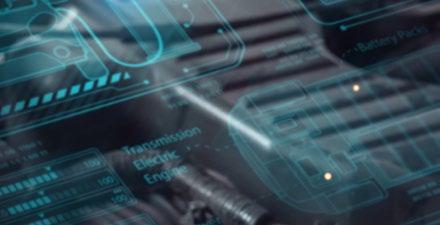
Predictive maintenance: Analysing real-time and historical vehicle data to forecast when components are likely to fail, allowing for proactive servicing.
Diagnostic assistance: Interpreting fault codes, symptoms and sensor data to guide technicians in making accurate and efficient repairs.
General workshop and office assistance: Automating routine tasks such as scheduling, inventory management, customer communication and invoicing.
AI-powered solutions such as advanced scanning tools, cloud-based diagnostic platforms, fleet management systems and integrated workshop management software are now available.
For example, on the TaT website, members are already using two levels of AI for diagnostic assistance. There is a big difference between efficient AI and the hoards of generic AI models on the internet. Efficient AI is rigorously trained so that it can focus on specific tasks. An old axiom from the early days of computers can now be applied to AI – rubbish in, rubbish out. Well trained AI is always going to be more effective than just chatting with a generic web model.

In Australia and New Zealand, AI adoption is most advanced among larger workshops, dealerships and fleet service providers. Independent workshops are beginning to explore these technologies, with uptake expected to grow as solutions become more accessible and cost-effective.
The benefits of AI
Reduced downtime and improved reliability: Predictive maintenance enables early detection of faults, allowing repairs to be scheduled before breakdowns occur.
Enhanced diagnostic accuracy: AI-driven diagnostic tools can analyse complex data sets, identify patterns and suggest likely causes and repair procedures, reducing guesswork and comebacks.
Optimised inventory management: AI predicts trends in parts usage, helping workshops maintain optimal stock levels and reduce inventory costs.
Increased efficiency: Automation of scheduling, invoicing and customer communication frees up staff for technical work and improves workflow.
Improved customer service: Proactive maintenance, faster diagnostics and streamlined communication increases customer satisfaction and trust.

Data-driven decision making:
AI provides actionable insights from workshop and vehicle data, supporting better business decisions.
How AI works with internal combustion engine (ICE), hybrid and electric vehicles
ICE and hybrid vehicles: AI analyses data from engine, transmission and emissions systems to predict failures in components such as injectors, sensors and batteries. Integration with telematics is becoming a reality.
Electric vehicles: AI is critical for monitoring battery health, electric drive systems and software updates.
Predictive analytics help manage battery degradation and optimise charging cycles, areas where traditional maintenance schedules are less effective. Some aftermarket scan tool manufacturers now offer high-voltage battery state of health testing abilities. Results gathered from the vehicle are compared to millions of other results captured from other users in cloud data and analysed by AI to give a more accurate and detailed battery report.
AI for general workshop and office operations
Beyond technical diagnostics, AI is increasingly used to streamline workshop administration:
Appointment scheduling:
AI systems optimise booking schedules and send automated reminders.
Customer communication: AI chatbots and virtual assistants handle routine enquiries and follow-ups.
Invoicing and administration: AI automates invoice generation, payment reminders and basic bookkeeping.
Data security: AI assists in monitoring and maintaining compliance with data protection regulations.
Assess your needs: Identify which areas – diagnostics, maintenance, scheduling, inventory, or customer service – that would benefit most from AI.
Start with integrated solutions: Choose platforms that will work with your existing workshop management and diagnostic systems.
Invest in staff training: Ensure technicians and office staff are trained to use AI tools effectively.
Monitor industry developments: Stay informed about new AI technologies and best practices through industry groups and training.
Prioritise data security: Ensure all customer and business data is handled securely and in compliance with regulations.
AI is set to play a major role in the future of the automotive aftermarket, offering significant benefits in efficiency, accuracy and customer service. While adoption in Australia and New Zealand is still developing, the technology is advancing rapidly. Workshop owners who evaluate their needs, invest in appropriate AI solutions and train their staff will be well positioned to remain competitive and deliver superior service as the industry evolves.
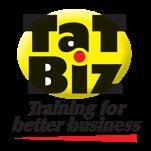

Accepted by a wide range of stations across New Zealand, the Capricorn Fuel Card lets you fill up without the fuss.
Just scan your card at a participating service station and the transactions will be automatically added to your Trade Account.
Save 8 cents off a litre (incl. GST) at the pump at participating service stations
Accepted at over 290 Mobil, Allied Fuel Stop, NPD and Waitomo fuel stations
Unlimited number of cards
Ready to start saving at the pump? Contact us today!
csl@capricorn.coop | cap.coop/ GetFuelCard


Submit your entry at cap.coop/funzone by 31 August 2025
June winner:WONTHAGGI AUTOMOTIVE who WON 5,000 Bonus Rewards Points
SPOT THE DIFFERENCE (5 differences to find!)
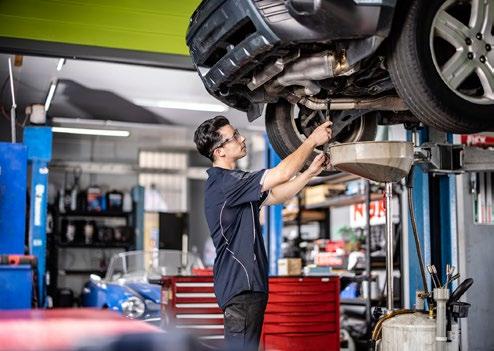
Last Month’s Answers

Please note that this

Congratulations to the winners of our CAP ezi-parts Pizza Treat promotion in May!
We hope you enjoyed your pizza treat with the team!
Lucas Auto Electrical
Palmer Panel and Paint
Mangawhai Auto Electrical
Volts Auto Electrical
Steve’s Tyres Auto Care
